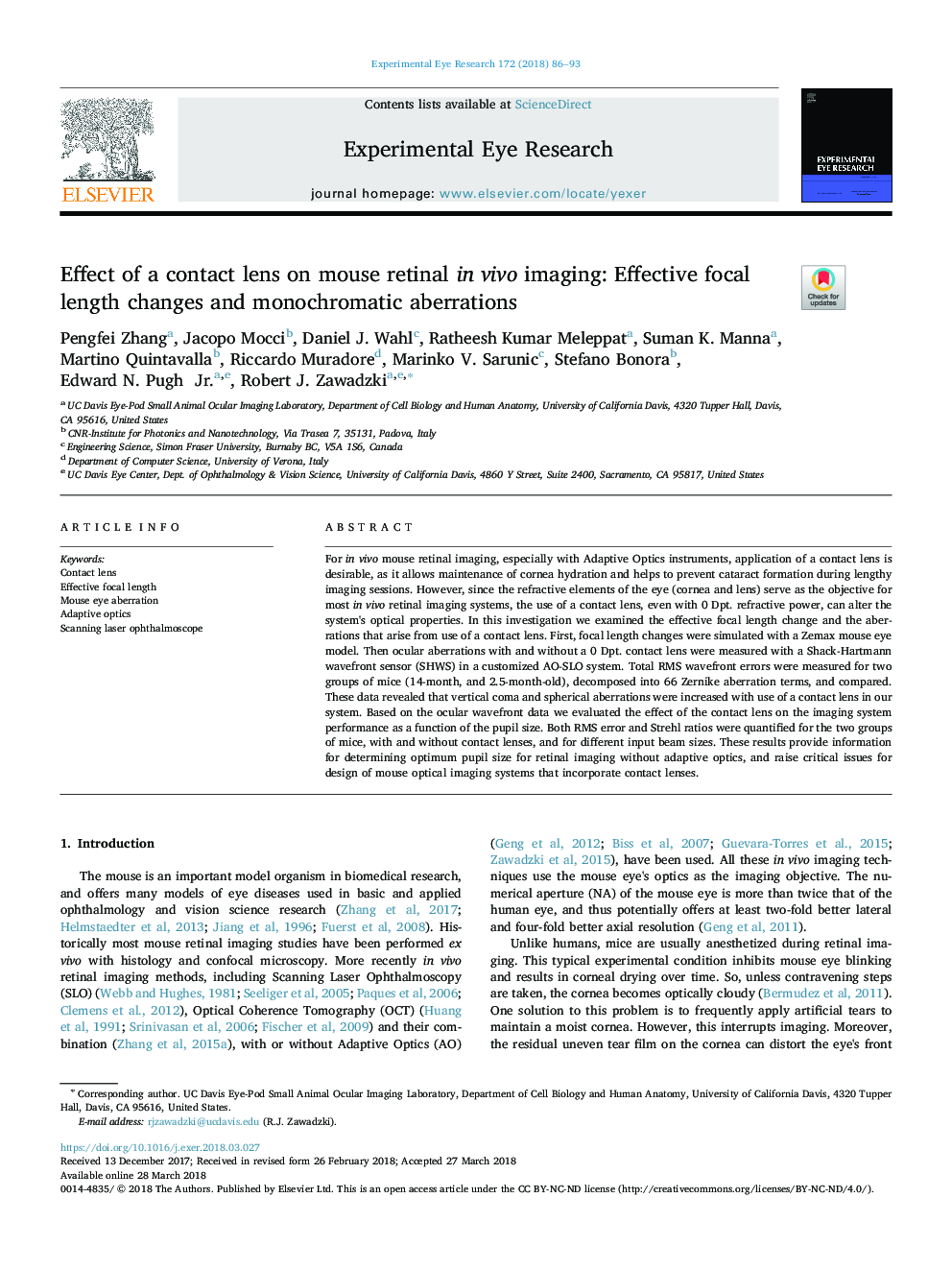| Article ID | Journal | Published Year | Pages | File Type |
|---|---|---|---|---|
| 8791966 | Experimental Eye Research | 2018 | 8 Pages |
Abstract
For in vivo mouse retinal imaging, especially with Adaptive Optics instruments, application of a contact lens is desirable, as it allows maintenance of cornea hydration and helps to prevent cataract formation during lengthy imaging sessions. However, since the refractive elements of the eye (cornea and lens) serve as the objective for most in vivo retinal imaging systems, the use of a contact lens, even with 0 Dpt. refractive power, can alter the system's optical properties. In this investigation we examined the effective focal length change and the aberrations that arise from use of a contact lens. First, focal length changes were simulated with a Zemax mouse eye model. Then ocular aberrations with and without a 0 Dpt. contact lens were measured with a Shack-Hartmann wavefront sensor (SHWS) in a customized AO-SLO system. Total RMS wavefront errors were measured for two groups of mice (14-month, and 2.5-month-old), decomposed into 66 Zernike aberration terms, and compared. These data revealed that vertical coma and spherical aberrations were increased with use of a contact lens in our system. Based on the ocular wavefront data we evaluated the effect of the contact lens on the imaging system performance as a function of the pupil size. Both RMS error and Strehl ratios were quantified for the two groups of mice, with and without contact lenses, and for different input beam sizes. These results provide information for determining optimum pupil size for retinal imaging without adaptive optics, and raise critical issues for design of mouse optical imaging systems that incorporate contact lenses.
Related Topics
Life Sciences
Immunology and Microbiology
Immunology and Microbiology (General)
Authors
Pengfei Zhang, Jacopo Mocci, Daniel J. Wahl, Ratheesh Kumar Meleppat, Suman K. Manna, Martino Quintavalla, Riccardo Muradore, Marinko V. Sarunic, Stefano Bonora, Edward N. Jr., Robert J. Zawadzki,
